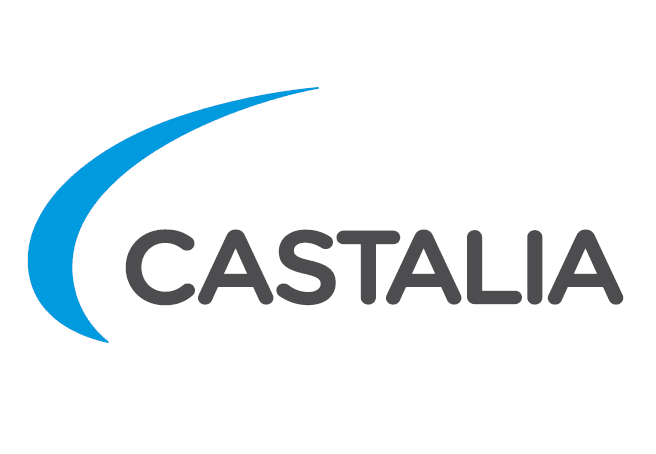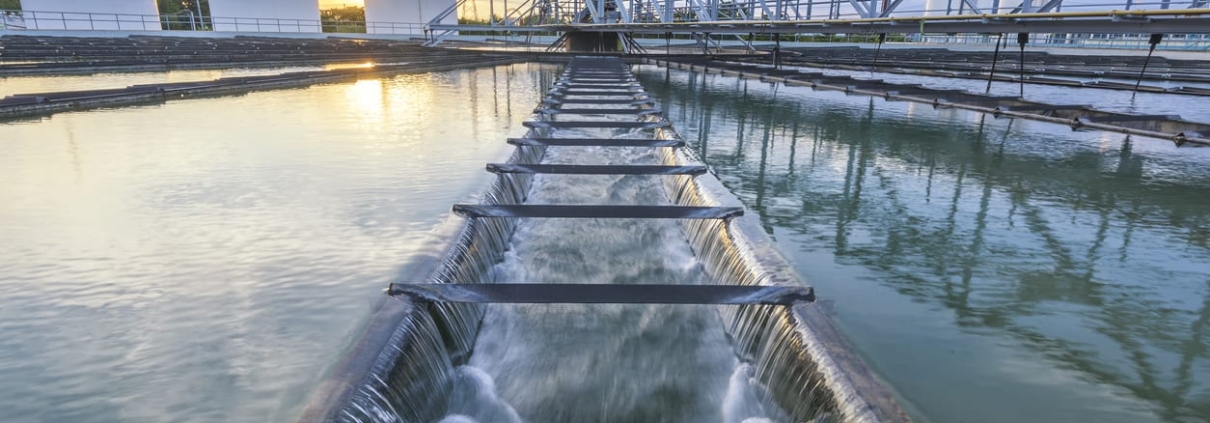Castalia’s blog
The Caribbean Region needs to increase renewable energy uptake to reduce high energy costs and reduce greenhouse gas emissions. Energy costs in the Caribbean are four times more than the average price in many developed countries. According to the Caribbean Development Bank (CDB), 19 countries in the region import more than 80% of their energy supply, about seven percent of their overall pre-COVID GDP, making the Caribbean particularly vulnerable to oil market shocks. Also, the energy sector accounts for 42% of the region’s greenhouse gas emissions1. Switching to renewable energy in the Caribbean is essential for improved fiscal management, long-term economic and social stability, and climate change adaptation.
To advance the energy transition, the Caribbean Development Bank (CDB) developed the Accelerated Sustainable Energy and Resilience Transformation Framework (ASERT) 2030. As part of the ASERT program, CDB engaged Castalia to identify barriers to renewable energy investments in the region. We identified the lack of regulation for renewable energy in the region holds back economically viable energy resiliency projects from being implemented. A clear set of regulations creates confidence among investors and utilities to implement renewable energy projects.
To address the barriers to renewable energy investments, with the support of the CDB, Castalia developed a Minimum Regulatory Framework. The framework proposes a minimum set of regulations that, if put in place, would enable private and public investors to implement renewable energy projects. The MRF’s regulations give investors and utilities certainty of access to sites and resources needed to develop projects. Also, the proposed regulations provide certainty to investors for the costs of their investment, including earning a return in capital.
The MRF is recognized by experts as an excellent option to scale renewable energy in the Caribbean. Castalia presented the Minimum Regulatory Framework as a potential solution to financing resilience at the Island Resiliency Action Challenge (IRAC) during the 15th Annual Caribbean Renewable Energy Forum (CREF) on April 26th of 2023. The challenge asks Caribbean stakeholders to identify the region’s most pressing challenges, pitch solutions, agree on the best solution, and act on an immediate action plan to implement it. This year’s challenge question was, “What is preventing the development of resilient energy systems in the Caribbean?”. The audience voted for the MRF as the best solution to enable renewable energy and energy efficiency projects.
The MRF is a set of components needed to enable large-scale deployment of renewable electricity generation (both grid-scale and distributed generation). The MRF helps countries to identify gaps in enabling environments for RE financing and deployment and provides the components in a form that can be easily adapted for and implemented in each country. The MRF components include regulations and frameworks for:
- Integrated resource and resilience plan that tells countries what resources to procure.
- Procurement and financing mechanisms to facilitate the selection, solicitation, and payment of projects.
- Access to the site, resources, and environmental permits to enable the development of projects.
- Distributed generation framework mechanism that allows customers to develop renewable energy plans at their homes and businesses and sell excess electricity into the grid.
- Revenue mechanisms component that allows project investors to recover the cost of investment through the provision of services by applying cost-recovery tariffs. The tariffs also allow utility companies to build their creditworthiness. Creditworthy utilities can finance projects on their own and procure private investors to develop and finance projects with.
Of course, implementing the MRF will be a challenge. Many Caribbean nations have limited financial, human, and technological resources to roll out development projects. Additionally, each country has its own unique political, economic, and social systems. MRF implementors must consider the unique needs and circumstances of each nation. Countries will also require technical assistance to implement each component. Country governments, the CDB, and donors must coordinate quick and sustained action to effectively implement the framework.
To support the efforts to implement the MRF, Andrew Sprott, Practice Leader at Castalia, developed the action plan and will lead an implementation task force comprised of representatives from Caribbean governments and banks, development agencies, and other Caribbean energy sector stakeholders. During the next twelve months, the task force will work closely with four Caribbean countries that have agreed to start implementing the MRF: Montserrat, Dominica, Saint Kitts and Nevis, and Saint Lucia.

The task force will help each implementing country overcome the challenges with support from the Caribbean Development Bank. MRF components can be adapted to the context of each country, facilitating the regional implementation of the framework. The first step will be to help each country identify gaps in enabling environments for renewable energy financing and deployment. The task force will then move on to implement the MRF and reach procurement for renewable energy projects in implementing countries.
Ultimately, the MRF will help Caribbean countries establish regulations that attract investment to implement renewable energy projects. Implementing such projects enable the region to change its energy profile into a resilient sustainable one by cutting back dependency on imported fuel. We are excited to see the MRF implemented in support of the Caribbean region’s energy system transformation.
Chris Straughn (Caribbean Development Bank), Clive Hosten (Grenada Electricity Services), David Ehrhardt (Castalia Advisors), Devon Gardner (Caribbean Centre for Renewable Energy and Energy Efficiency), Eric Salamanca (Turks, and Caicos Islands Government), Faith Corneille (U.S. Department of State), Gillian Charles-Gollop (CIBC First Caribbean International Bank), Haniff Woods (St. Kitts Electricity Company Ltd.), Hon. Otis Morris (Turks and Caicos Islands Government), Jonathon Kelly (St. Kitts Electricity Company Ltd), Marcus Cyrus (Weatherford Trinidad), Marsha Atherley-Ikechi (Fair Trading Commission, Barbados), Shonette Harrison (Regulatory Authority of Bermuda), Veronica Lizzio (Castalia Advisors), Jeane Nikolai (The Government of Bermuda), Tisha Marajh (Republic Bank), John Selby (Graph Energy), Lyndon Francis (Antigua Public Utilities Authorities), Bertill Browne (Skelec), Kimberly Lewis (AEG).
References
USAID Data Services, Bureau for Management, Office of the Chief Information Officer. (2021, October). Greenhouse Gas Emissions in the Eastern and Southern Caribbean Region. Climatelinks. Available at: https://www.climatelinks.org/sites/default/files/asset/document/2021-10/Greenhouse%20Gas%20Emissions%20in%20the%20Eastern%20and%20Southern%20Caribbean%20Region%20%28Final%29.pdf
OPINION: The need for reform in the New Zealand water sector is beyond debate.
Regulation must improve, management capability needs to be lifted in many localities, and investment levels need to match consumer demands and minimum service standards.
Yet successful reform can be achieved without at least one controversial aspect of the government’s proposal – merging 67 water services currently owned by councils into four large pan-regional water utilities.
The Water Service Entities Bill is currently progressing through Parliament, with the Select Committee receiving a mammoth 88,000 submissions.
It will be hearing oral submissions from some of them, including Communities 4 Local Democracy, a group of 31 councils, over the next weeks.
The water sector is critical to health and wellbeing, so it is important New Zealanders’ views are heard and understood.
The debate should be based on credible evidence and open inquiry. Unfortunately, the selected reform model is highly flawed.
It adopts a globally unique governance structure, it will increase fiscal risk, and similar inefficient mega-amalgamations in other countries have failed.
The flaws with the mega-merger model come down to five factors. First, while most people agree that billions of dollars of investment are needed, the government’s modellers used Scottish investment levels and implausible assumptions to present a false choice between the megamergers and an unrealistic alternative with an overstated $185 billion of investment.
Second, the claimed merger cost savings do not withstand scrutiny, especially in light of the zero job losses promise, and few (if any) physical networks joining up.
Third, the bill says councils are nominally owners, but they have no conventional ownership rights, and are prohibited from providing equity capital.
The Byzantine governance structure and reporting mechanisms reduce accountability to the public – a valid criticism the Auditor-General has also made.
Fourth, the mega-entities’ debts will ultimately become Crown liabilities. This is concerning since the entities will be some of New Zealand’s largest corporations with significant planned borrowing.
With the four entities controlling such large balance sheets (with corresponding risks), it is highly likely that a future government would want to impose more central government control. Indeed, this happened in England and Wales after the 1972 merger of hundreds of local water services into ten regional water boards.
Fifth, government officials failed to consider alternative lower-risk reforms options, or properly take into account the impact of better regulation of the water sector.
For these reasons, Castalia has developed a constructive alternative reform model for Communities 4 Local Democracy. The alternative model requires both central government and local government to step up.
Central government would set regulatory benchmarks on water quality, economic performance and environmental outcomes. Councils would then act to comply with those regulatory benchmarks within a strict five-year timeframe.
During that period, we would expect locally and regionally-appropriate models to be developed in response to incentives.
A similar process was used when regional power boards were transferred to electricity lines companies in the early 1990s. The process could be supported by a commissioner, for example the Infrastructure Commission, to resolve any disputes and help facilitate agreement. This facilitation role has worked very well in recent municipal mergers in Portugal, for example.
A target end-state will emerge a!er the five years. Smaller councils will likely merge their water services into a proportionately-owned regional public water company.
Localities that can reach compliance may opt to stay standalone. Councils will be held to account to ensure water quality, financial performance and environmental outcomes are met.
The result is reform where local and regional differences are accommodated.
Community accountability is retained, management and governance incentives are enhanced, access to finance is improved, scale and scope efficiencies are exploited and the model is flexible for future developments such as climate or demographic change.
Castalia’s alternative model can finance the same planned $97 billion of capital expenditure as under the government’s mega-model for the next two decades without changing current water charges or councils’ borrowing conditions.
With modest changes to borrowing conditions, the alternative model would be just as financeable as the government’s proposal.
The model also ensures the untagged $2.5 billion offered to councils under the government’s reforms would be applied to water infrastructure only.
One positive outcome from the water reforms is a greater awareness of the role of this critical service.
With this greater awareness has come a realisation for many that the Water Services Entities Bill creates significant risks. We hope the Select Committee, or a future government, takes on board our constructive proposal for a better reform model.
*This is an unabridged version of an opinion editorial written by Andreas Heuser that appeared in the New Zealand Herald on 2 September 2022.
Castalia was hired by Open Country Dairy Limited to analyze a proposed capital restructure by Fonterra. The proposal would significantly change the number of shares in the dairy cooperative that prospective farmer-suppliers would have to acquire. The proposal is likely to collapse the price of Fonterra shares. It will shift significant wealth from current farmers to Fonterra itself. This has detrimental effects for competition in the milk processor market, compounding anti-competitive changes in 2020 to the Dairy Industry Restructuring Act 2001. The proposal is likely to lead to higher milk prices, including for domestic milk consumers.
The report is available here.
Queries about the report can be directed to andreas.heuser@castalia-advisors.com
Update 20 April 2022
Castalia has issued a response to comments from Fonterra and in the media about our report. The response is available here.




















